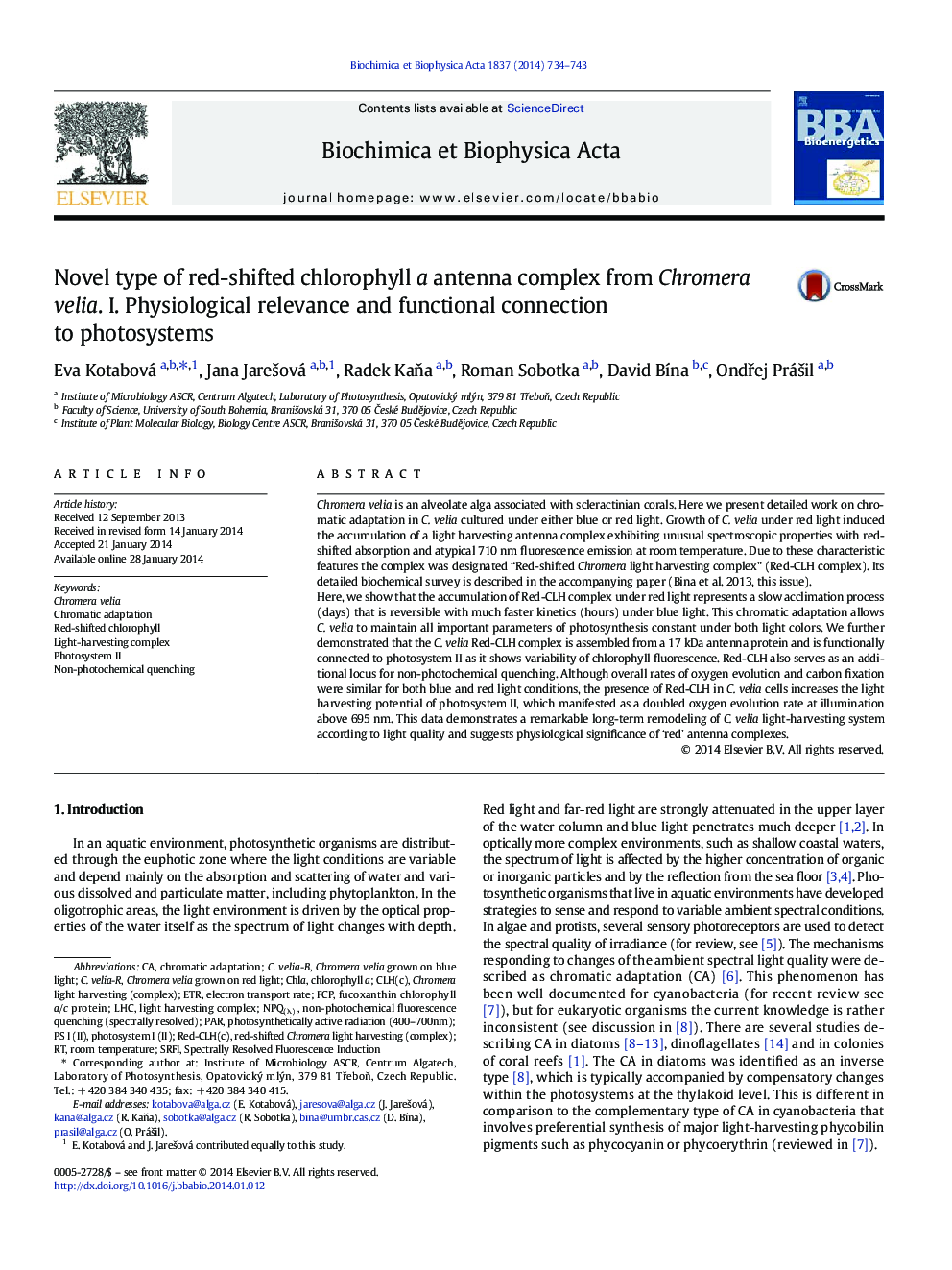| Article ID | Journal | Published Year | Pages | File Type |
|---|---|---|---|---|
| 10795692 | Biochimica et Biophysica Acta (BBA) - Bioenergetics | 2014 | 10 Pages |
Abstract
Here, we show that the accumulation of Red-CLH complex under red light represents a slow acclimation process (days) that is reversible with much faster kinetics (hours) under blue light. This chromatic adaptation allows C. velia to maintain all important parameters of photosynthesis constant under both light colors. We further demonstrated that the C. velia Red-CLH complex is assembled from a 17Â kDa antenna protein and is functionally connected to photosystem II as it shows variability of chlorophyll fluorescence. Red-CLH also serves as an additional locus for non-photochemical quenching. Although overall rates of oxygen evolution and carbon fixation were similar for both blue and red light conditions, the presence of Red-CLH in C. velia cells increases the light harvesting potential of photosystem II, which manifested as a doubled oxygen evolution rate at illumination above 695Â nm. This data demonstrates a remarkable long-term remodeling of C. velia light-harvesting system according to light quality and suggests physiological significance of 'red' antenna complexes.
Keywords
Related Topics
Life Sciences
Agricultural and Biological Sciences
Plant Science
Authors
Eva Kotabová, Jana JareÅ¡ová, Radek KaÅa, Roman Sobotka, David BÃna, OndÅej PráÅ¡il,
